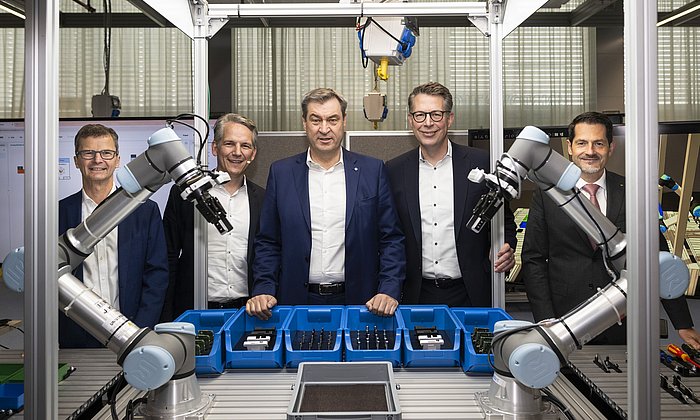NewIn: Majid Khadiv
How robots learn to make decisions
Majid Khadiv's goal has a name: 'Automan'. The Autonomous Humanoid Robot is designed to perceive its environment, react to changes, and make and execute decisions independently. "I aim to use machine learning to enable robots to relieve people of repetitive or dangerous tasks," says the Professor of AI Planning Khadiv. He has been conducting research and teaching at TUM since September 2023 and is a member of the Munich Institute of Robotics and Machine Intelligence.
The humanoid robot will later be used primarily when it is too dangerous for humans or for repetitive, simple, and monotonous tasks. Extinguishing fires, repairing electricity pylons, or performing simple tasks in factories: according to Prof. Khadiv, these are the roles where humanoid robots will be deployed.
Robots for dangerous and less challenging work
It's far from easy, explains the scientist, using the example of a seemingly routine activity. "When I ask someone to tidy up my office after lunch, they pick up loose sheets of paper, take out boxes, and wipe down the table," says Prof Khadiv. But what is simple for a human being can be very complex for a robot: It has to work out how to pick up the papers, where to put them, estimate the weight of the box, decide whether to set it down briefly before opening the door, whether it is better to go twice instead of doing it all in one go. "For a robot, it's hard to pick up a leaf but easy to play chess," says the scientist. "In humans, it's exactly the opposite."
Consequently, Prof. Khadiv's Automan robot will initially acquire various skills from humans by using an algorithm that learns from videos on the internet. The greater the data pool, the better the algorithm understands how people move and is able to adapt this knowledge to the robot's physique and the associated control system. The researchers call this 'embodied artificial intelligence'. So far, this type of machine learning has been lacking in most robot systems.

Three years to climb stairs
Majid Khadiv is optimistic about changing this. He has already solved tricky tasks in his previous research activities. Khadiv began studying the humanoid robot Surena with his doctoral thesis at the University of Tehran in his home country of Iran. That involved a lengthy search for a viable solution. "It took a whole year before Surena could walk and three years before he could climb stairs," he recalls. In 2018, he moved to the Max Planck Institute for Intelligent Systems in Tübingen as a research associate. It took the researchers "only" six months before their two-legged robot Bolt could finally walk.
For Khadiv, the frustrating phases where almost nothing works out as envisaged are now just part of doing research. But he has also experienced the "magic moment" when it all falls into place. It was "wonderful" to watch the two-legged Bolt finally running for the first time. For Khadiv, one thing is clear: "If you keep trying something long enough and believe in it, it will eventually work out."
The following videos show experiments with the biped Bolt and quadruped Solo:
- For the first time, the two-legged robot Bolt manages to walk without falling once. To the Video
- Experiments with robots require a certain tolerance for frustration. As the example of the four-legged Solo shows, the robot can learn and ultimately manages to jump onto a raised platform. To the video
- The video shows how the four-legged robot can adapt to new boundary conditions (different surfaces, impacts from the side) with the help of reinforcement learning. To the video
- The humanoid robot Surena has learned to walk (2015). Included: Majid Khadiv, to the video. More information: spectrum.ieee.org/iran-humanoid-robot-surena-iii
Technical University of Munich
Corporate Communications Center
- Andreas Schmitz
- presse@tum.de
- Teamwebsite
Contacts to this article:
Prof. Majid Khadiv
Professor für AI Planning in Dynamic Environments
Technische Universität München (TUM)
majid.khadiv@tum.de


